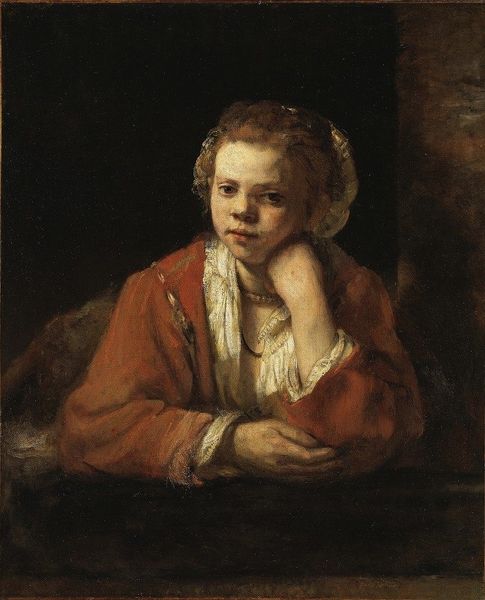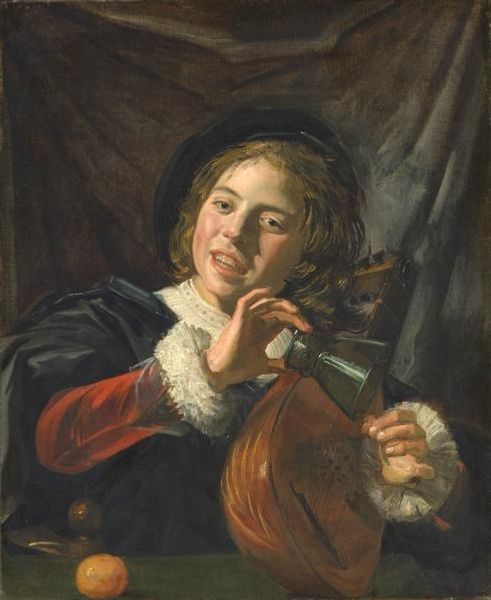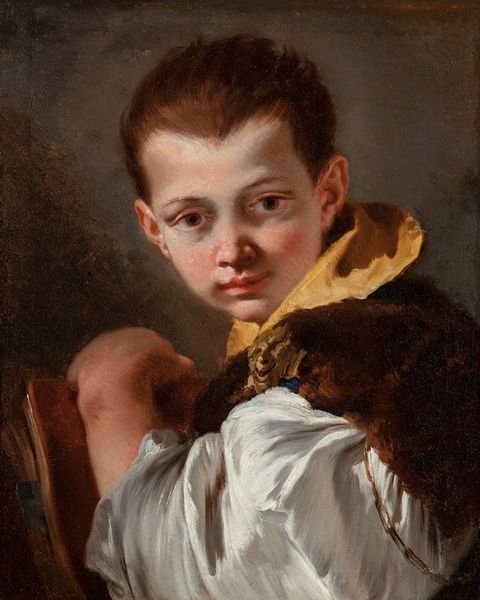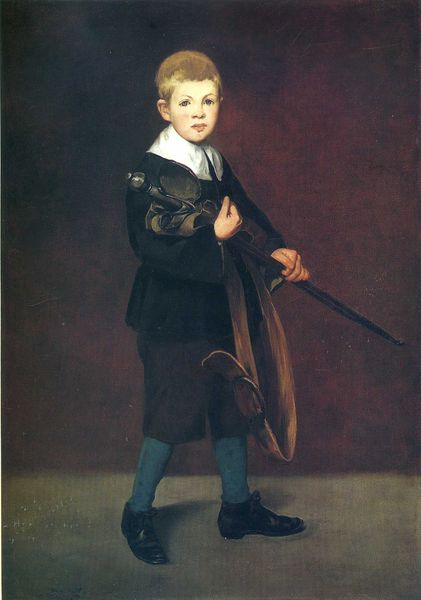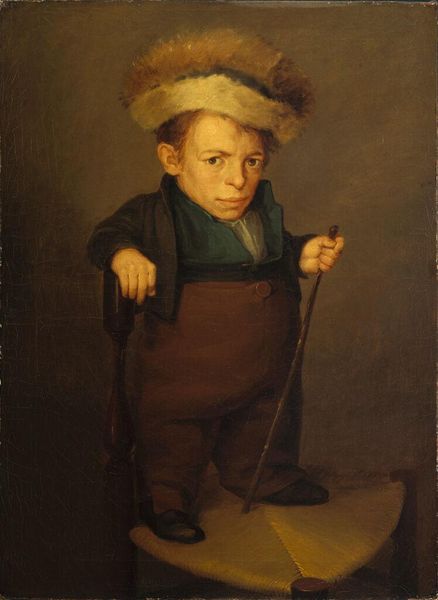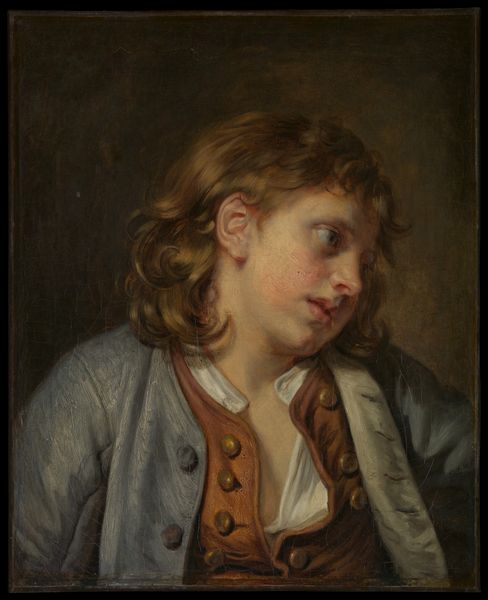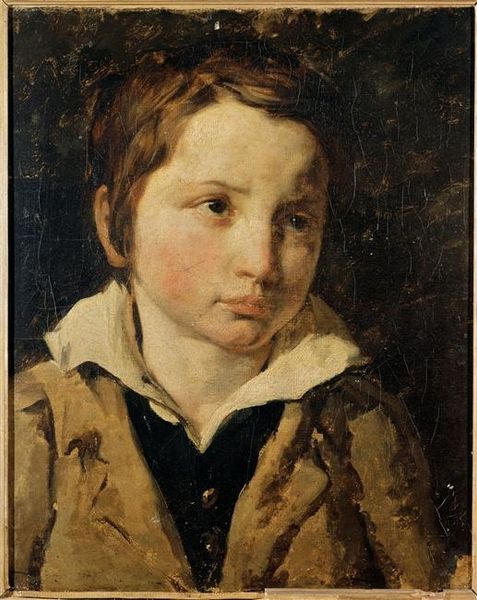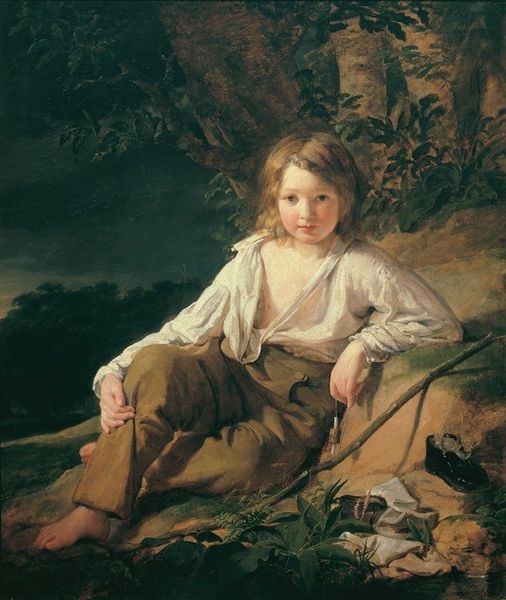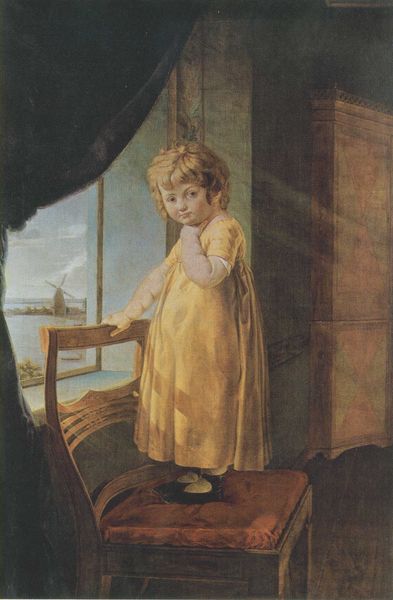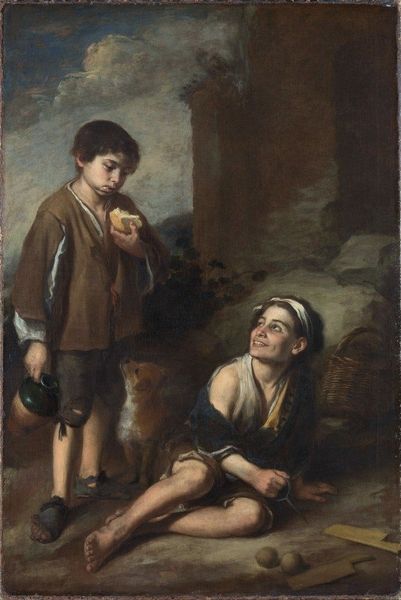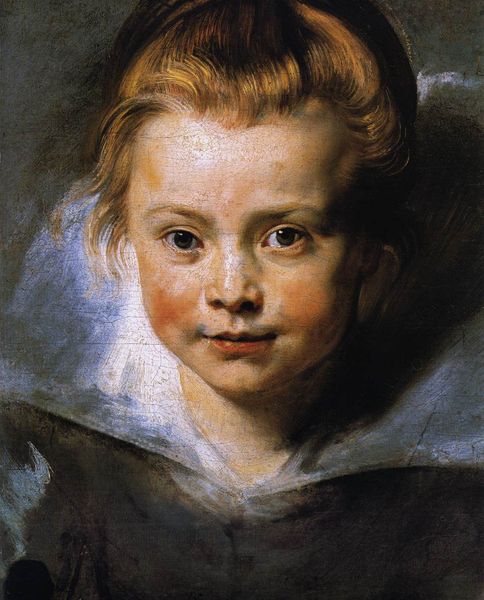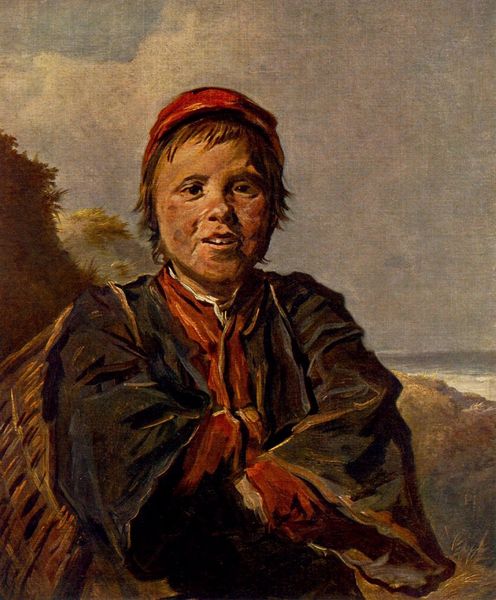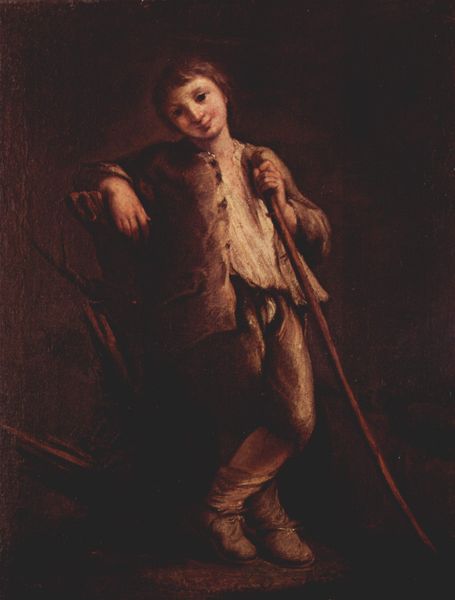
The Court Dwarf, Don Franciso Lezcano called 'El Nino de Vallecas' 1637
0:00
0:00
diegovelazquez
Museo del Prado, Madrid, Spain
painting, oil-paint
#
portrait
#
narrative-art
#
baroque
#
painting
#
oil-paint
#
figuration
#
oil painting
#
genre-painting
#
academic-art
#
realism
Dimensions: 83 x 107 cm
Copyright: Public domain
Editor: Diego Velázquez's "The Court Dwarf, Don Francisco Lezcano called 'El Nino de Vallecas'," painted in 1637. It strikes me as quite a sympathetic portrayal; despite the subject's status, there's a sense of dignity. What is your read on this portrait? Curator: It is indeed, at first glance, a compelling representation. However, understanding its historical context is crucial. As a court painter, Velázquez's role was intertwined with the power structures of the Spanish monarchy. So, consider: what function did figures like Don Francisco serve within the court? How does Velázquez’s depiction reinforce or challenge that role? Editor: I suppose they served as entertainment, maybe even as symbols of power, showcasing the King’s dominion over all subjects, regardless of their physical condition. So is Velazquez simply complicit in the marginalization? Curator: Exactly. While Velázquez's skill in capturing Lezcano's likeness is undeniable, we must be mindful of how 17th-century court culture objectified individuals with disabilities. His agency is notably absent; consider how the landscape blurs, prioritizing Don Francisco, and ask yourself if it helps us understand him better as a person, or as an aesthetic, societal curio? Editor: I see your point. It's a powerful image, technically brilliant, but ethically complex. It is quite disturbing now when you think of this work, placed now at Museo del Prado. It reveals also the role that museums can play in both exhibiting but also in shedding a light into cultural issues. Curator: Precisely. Reflecting on that complexity allows us to engage with art history in a more meaningful and critical way, it is through institutions like the Museo del Prado that allows the art to speak but also it is their responsibility to trigger these conversations. Editor: This has shifted my understanding considerably, prompting a deeper, much more critical look at the social dynamics represented, and also on Velazquez choices as an artist.
Comments
No comments
Be the first to comment and join the conversation on the ultimate creative platform.
